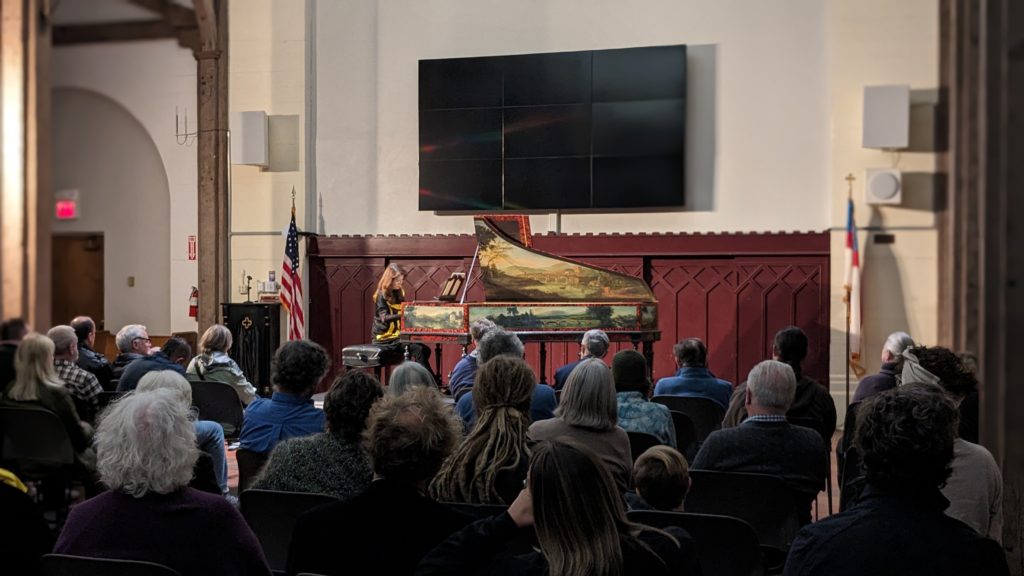Takae Ohnishi’s Glorious Plunge Into French Baroque Harpsichord
Some say that the appreciation of French harpsichord music is an acquired taste. But if they are correct, I would counter that it is a taste well worth acquiring. Takae Ohnishi’s traversal of French harpsichord repertory in a recital for the San Diego Early Music Society Saturday in the Great Hall of St. Paul’s Cathedral made the most eloquent and compelling case imaginable for this music.
She wisely opened with Louis Couperin’s Suite in A Minor, a daringly contrapuntal mid-17th century dance suite that helped to establish this genre as the urbane, ornate successor to the modest, folk-like dance movements of the Renaissance. As organist at the Parisian church of St. Gervaise and an accomplished viol player in the royal court, Louis Couperin was the epitome of musical sophistication. Not surprisingly, he was the first Couperin of several generations of celebrated French composers, including his nephew François Couperin the Great, the J. S. Bach of the French Baroque.Ohnishi’s rhapsodic take on the A Minor Suite’s opening unmeasured prelude clearly set the pace for the level of untrammeled but elegant ornamentation that would dominate her performance, filling the Great Hall with a sonorous mist like the billowing incense at a very high Mass. Titled “Prélude à l’imitation de M. Froberger,” the movement pays tribute to Johann Jacob Froberger, the noted German master of musical counterpoint and a contemporary of Louis Couperin. If Ohnishi’s animated “Allemande l’amiable” seemed playful, almost coy, her pensive “Sarabande” evoked a more refined passion. “La Piémontaise,” the rousing finale, verged on a rowdy burlesque, but then French music without a sense of humor would not be French.
Having established the foundation of French Baroque with Louis Couperin, Ohnishi jumped to era’s farewell, the music of the delightfully decadent Jacques Duphly. With her abundant technical prowess Ohnishi offered a dazzling bravura account of Duphly’s “Médée,” a furious toccata inspired by the murderous mythological deity Medea. One historian called “Médée” a “savage tirade,” but Ohnishi clearly relished this work from that dangerous time of “Let them eat cake!” Duphly’s “La Forqueray” nestled in an insouciant rumble from the lowest octaves of the formidable two-manual harpsichord the Early Music Society provided. Duphly aptly chose to exploit this register of the instrument since Antoine Forqueray was a bass viola da gamba virtuoso. Duphly’s Chaconne revealed how far he had strayed from the serious contrapuntal style of the previous century, indulging in the more decorative flourishes of the style galant and its flashy cross-hand techniques.
“La marche des Scythes” by the obscure early 18th-century Joseph-Nicolas-Pancrace Royer—another bravura showpiece—conjured formations of ancient Scythian military troops marching in full battle array across the deserts of the Middle East. Ohnishi exploited the work’s massive rolled chords and driving rhythms to splendid effect, pulling unusually massive textures from the instrument.
Ohnishi completed her French tour with a compelling, elegantly detailed performance of a 7-movement Suite in C Minor that was the result of an unusual family project. Antoine Forqueray was a celebrated bass viol player in the court of Louis XIV who left a substantial library of challenging works for his instrument. His son Jean-Baptiste Forqueray was also a bass viol virtuoso, and after his father’s demise, the son improved on his father’s compositions and even arranged some of them for solo harpsichord, including this Suite in C Minor.
Ohnishi’s encore was the theme from J. S. Bach’s Goldberg Variations.
This recital was presented by the San Diego Early Music Society in the Great Hall of St. Paul’s Episcopal Cathedral, San Diego, on Saturday, January 27, 2024.

Ken Herman, a classically trained pianist and organist, has covered music for the San Diego Union, the Los Angeles Times’ San Diego Edition, and for sandiego.com. He has won numerous awards, including first place for Live Performance and Opera Reviews in the 2017, the 2018, and the 2019 Excellence in Journalism Awards competition held by the San Diego Press Club. A Chicago native, he came to San Diego to pursue a graduate degree and stayed.Read more…

